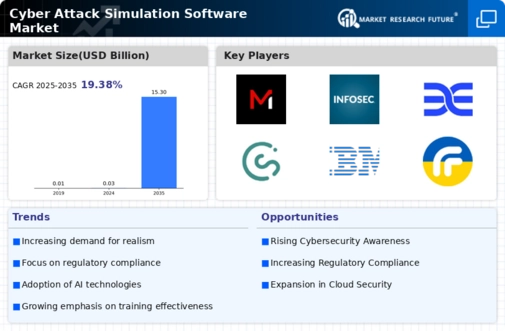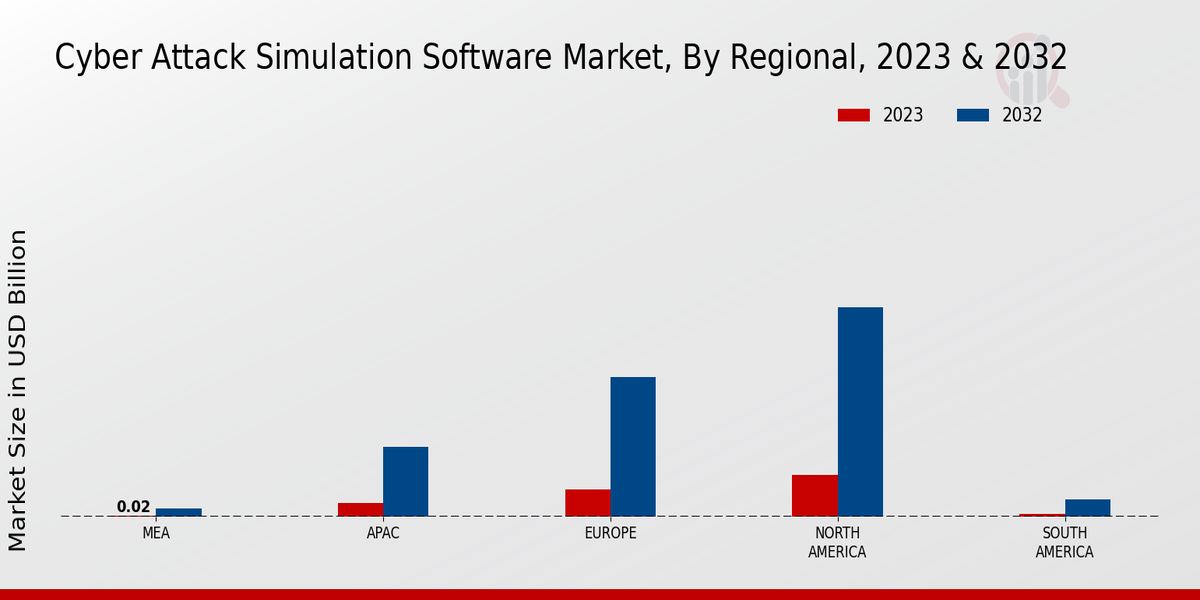The Cyber attack Simulation Software Market has seen significant growth as organizations increasingly recognize the importance of preparing for potential security breaches. As cyber threats evolve and become more sophisticated, businesses are turning to simulation software to proactively test their defenses, identify vulnerabilities, and enhance their incident response strategies. The competitive landscape within this market is characterized by a diverse range of players, each bringing unique strengths and innovations to address the pressing challenges posed by today’s evolving cyber threat environment.
Companies are investing heavily in research and development to provide advanced solutions that integrate artificial intelligence and machine learning capabilities.
Moreover, partnerships and collaborations among technology providers are becoming more common as they seek to bolster their product offerings and expand their market reach. Understanding the competitive dynamics and positioning of key stakeholders in this space is crucial for organizations aiming to enhance their cybersecurity postures. Mandiant holds a prominent position in the Cyber attack Simulation Software Market, leveraging its extensive expertise in incident response and threat intelligence. The company is well-regarded for its comprehensive range of simulation software solutions that allow organizations to conduct realistic cyber-attack scenarios.
Mandiant's strengths lie in its rich history of analyzing real-world cyber incidents, which informs the development of its simulation tools. The ability to provide data-driven insights and actionable recommendations sets Mandiant apart from many competitors, enhancing its value proposition to clients. Its strong network of cybersecurity experts and ongoing investment in threat research empower organizations to effectively assess their readiness against potential attacks. This focus on real-time defense strategies enables Mandiant to deliver tailored simulation experiences, significantly strengthening its position in the market.
Infosec has emerged as a notable player in the Cyber attack Simulation Software Market, primarily recognized for its commitment to cybersecurity education and training.
The company places a strong emphasis on creating user-friendly software that facilitates realistic simulation exercises to enhance workforce preparedness against cyber threats.Infosec's strength lies in its integration of educational resources along with simulation tools, ensuring that users not only understand their potential vulnerabilities but also learn how to defend against them effectively.By fostering a holistic approach to cybersecurity training and simulation, Infosec appeals to organizations looking for comprehensive solutions that empower their employees while boosting their overall security posture.
Additionally, Infosec's dedication to innovation and updates in line with the latest cyber threats contributes to its competitive edge, solidifying its position within a dynamic market landscape.
























